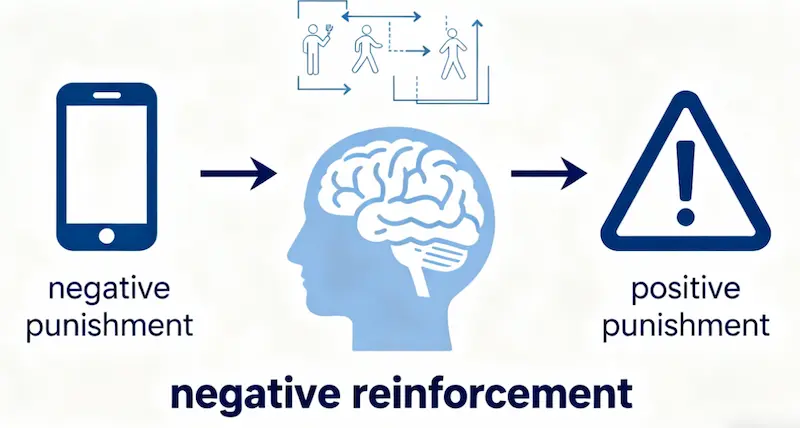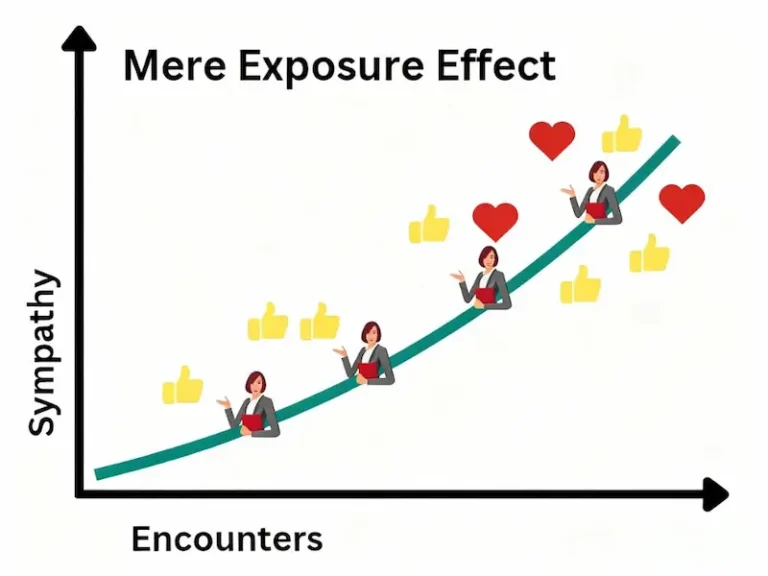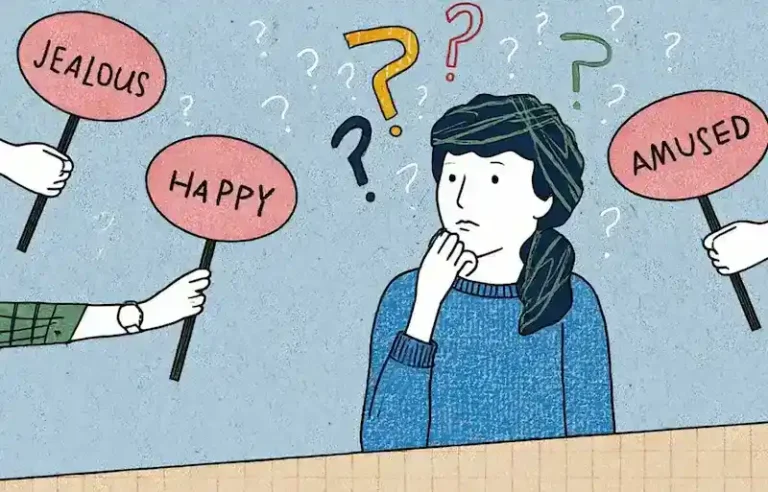Negative Punishment in Psychology: Definition, Examples, and Key Differences Explained

Table of Contents
1. Introduction
In psychology, understanding how behavior is shaped, controlled, and modified is one of the most important areas of study. Among the core concepts of behavioral psychology is punishment, a mechanism designed to reduce or discourage certain actions.
There are two primary forms of punishment: positive punishment and negative punishment. Both aim to decrease unwanted behavior, but they operate in opposite ways. Positive punishment adds an unpleasant consequence, while negative punishment removes something desirable.
In this article, we will explore negative punishment psychology in depth — including its definition, examples, related theories, and how it differs from positive punishment and negative reinforcement. By the end, you’ll fully understand what negative punishment is, how it works, and how it applies to real-life situations in education, parenting, and therapy.
2. Negative Punishment Psychology Definition
So, what is negative punishment in psychology?
The negative punishment psychology definition refers to a behavioral process where a pleasant stimulus is removed following an undesirable behavior, leading to a decrease in that behavior’s frequency over time.
In simple terms, negative punishment means taking away something good to reduce bad behavior.
Negative Punishment Definition (Psychology):
“A type of operant conditioning where a positive or desirable stimulus is removed after an undesired behavior, to decrease the likelihood of that behavior occurring again.”
This concept is rooted in B.F. Skinner’s theory of operant conditioning, which explains how behavior is influenced by its consequences. In AP Psychology, this process is commonly taught as part of the learning and conditioning unit, and the negative punishment AP Psychology definition aligns closely with Skinner’s original explanation.
3. How Negative Punishment Works
In behavioral terms, negative doesn’t mean “bad” — it means something is taken away. The punishment part simply means that the goal is to reduce an unwanted behavior.
Step-by-step process:
- A behavior occurs (e.g., a child talks back).
- A pleasant stimulus is removed (e.g., the parent takes away the child’s tablet).
- The child’s talking back decreases in the future.
This pattern reinforces the connection between action and consequence.
To fully grasp how negative punishment works, it’s helpful to compare it to positive punishment and negative reinforcement.
- Positive punishment: adding an unpleasant outcome (e.g., scolding).
- Negative punishment: removing something pleasant (e.g., taking away privileges).
- Negative reinforcement: removing something unpleasant to increase behavior (e.g., fastening a seatbelt to stop the alarm).
Behavioral psychologists — including B.F. Skinner, the most well-known negative reinforcement psychologist — used laboratory experiments to demonstrate these distinctions clearly.
4. Negative Punishment Examples
Let’s look at practical examples of negative punishment in psychology.
Parenting Example
A child refuses to do homework, so their parents take away TV time for the evening. The removal of a pleasant activity (watching TV) decreases the likelihood of refusing homework again.
School Example
A student misbehaves in class, and the teacher cancels recess. The loss of recess acts as negative punishment to discourage disruptive behavior.
Workplace Example
An employee repeatedly misses deadlines, and their supervisor removes them from an important project. Losing the opportunity serves as punishment for poor performance.
Relationship Example
One partner continually forgets to call, and the other stops showing affection. The loss of emotional connection acts as a negatively punished outcome, often motivating the person to change their behavior.
Each negative punishment example shares one key pattern: a rewarding stimulus is taken away, causing the undesired behavior to decrease.
5. Positive vs Negative Punishment: What’s the Difference?
Understanding the difference between positive and negative punishment is critical.
- Positive Punishment Definition (Psychology):
Adding an unpleasant stimulus after a behavior to reduce it.
Example: A child touches a hot stove and feels pain — the pain discourages repetition. - Negative Punishment Definition (Psychology):
Removing a pleasant stimulus after a behavior to reduce it.
Example: Losing privileges or rewards after misbehavior.
| Type | Mechanism | Example | Goal |
|---|---|---|---|
| Positive Punishment | Add something unpleasant | Getting scolded for lying | Decrease behavior |
| Negative Punishment | Remove something pleasant | Losing phone privileges | Decrease behavior |
If you’ve ever wondered “Which of the following is an example of negative punishment?”, the correct answer would be “Taking away a child’s video game for being rude.”
Both are forms of punishment, but their methods differ fundamentally.
6. Negative Punishment vs Negative Reinforcement
People often confuse negative punishment with negative reinforcement, but the difference lies in the purpose and the outcome.
- Negative Punishment: removes something pleasant to decrease behavior.
- Negative Reinforcement: removes something unpleasant to increase behavior.
Example:
- Negative Punishment → Teen breaks curfew → Parents take away car keys.
- Negative Reinforcement → Student studies early → Avoids teacher’s criticism.
Both involve “taking something away,” but their goals are completely opposite. Behavioral researchers and negative reinforcement psychologists emphasize that reinforcement is about strengthening behavior, not reducing it.
7. The Psychology Behind Negative Punishment
From a psychological standpoint, negative punishment works because people (and animals) are motivated by rewards and fear of loss. When a rewarding condition disappears, the brain associates the behavior that caused the loss with an undesirable outcome.
Emotional Mechanisms
- The brain releases stress signals when a pleasant experience is removed.
- Over time, this creates avoidance learning — the person avoids behaviors that lead to loss.
- Being negatively punished can trigger short-term frustration, but it’s highly effective when used consistently and fairly.
This form of behavioral control is often used in structured environments such as classrooms, therapy programs, and parenting routines to encourage responsibility and emotional regulation.
8. Common Misunderstandings About Negative Punishment
Many people think negative punishment means “harsh discipline,” but that’s incorrect. It’s not about causing harm — it’s about removing rewards to teach boundaries.
Common misconceptions:
- It’s about pain or humiliation → ❌ False
- It’s unethical → ❌ Not necessarily
- It doesn’t work → ❌ When applied correctly, it’s highly effective
The key lies in balance and proportionality. Overuse can lead to resentment or emotional withdrawal, so psychologists recommend combining it with positive reinforcement for best results.
9. Applications of Negative Punishment in Real Life
In Education
Teachers use negative punishment in psychology by removing privileges like free time or class rewards to manage misbehavior. This approach is part of behavioral management systems.
In Parenting
Parents often apply negative punishment to encourage good habits — for example, revoking a teenager’s phone when they fail to follow curfew.
In Therapy
Behavioral therapists use controlled forms of negative punishment in token economy systems, where clients lose tokens (rewards) for undesirable actions.
In Self-Regulation
People can even negatively punish themselves — for instance, skipping a favorite treat when they miss a workout. It’s a form of self-discipline based on conditioning.
These real-life examples of negative punishment in psychology show how flexible and effective this method can be across various situations.
10. Ethical Considerations and Effectiveness
The use of punishment in psychology raises ethical questions. While negative punishment is generally seen as less harmful than physical or emotional punishment, it still requires caution.
Guidelines for ethical use:
- The punishment should be immediate and consistent.
- The behavior and consequence must be clearly connected.
- Reinforce good behavior at the same time.
Research shows that negative punishment psychology is most effective when used in combination with positive reinforcement, creating a balanced approach that encourages learning without fear.
11. Key Takeaways
To summarize:
- Negative punishment definition psychology: the removal of a pleasant stimulus to decrease an unwanted behavior.
- It differs from positive punishment, which adds an unpleasant consequence.
- It’s part of operant conditioning, first studied by B.F. Skinner, the famous negative reinforcement psychologist.
- Real-world examples of negative punishment include losing privileges, being grounded, or having rewards revoked.
- It works best when applied fairly, consistently, and alongside reinforcement methods.
Understanding negative punishment in psychology helps parents, teachers, and therapists apply discipline ethically and effectively.
12. FAQs: Common Questions About Negative Punishment
1. What is negative punishment in psychology?
It’s the removal of a pleasant stimulus following an undesired behavior to reduce that behavior’s occurrence.
2. Can you give examples of negative punishment?
Yes. Taking away a phone, canceling privileges, or losing tokens in a behavior system are all examples of negative punishment.
3. Which of the following is an example of negative punishment?
Taking away a child’s video game after misbehavior is a correct example.
4. What is the positive punishment definition psychology?
Adding an unpleasant consequence (like a scolding or fine) to reduce bad behavior.
5. Who is the main negative reinforcement psychologist?
B.F. Skinner, the founder of operant conditioning, is credited with defining reinforcement and punishment principles.
6. What is the negative punishment AP Psychology definition?
It’s defined as removing a rewarding stimulus after a behavior to decrease its likelihood — a core part of AP Psychology’s learning theory unit.
7. Is being negatively punished always effective?
It depends on timing, consistency, and the individual’s motivation. When used ethically, it can be one of the most effective tools in behavioral learning.
13. Conclusion
Understanding negative punishment psychology gives us deep insight into how people learn from consequences. Whether in a classroom, a family, or personal development, this method shapes behavior through the power of loss and reflection.
While positive punishment focuses on adding discomfort, negative punishment leverages the human desire to keep pleasant experiences. When applied wisely — with empathy and consistency — it becomes a powerful tool for personal growth, education, and behavioral change.
References
- Skinner, B. F. (1938). The Behavior of Organisms: An Experimental Analysis. New York: Appleton-Century-Crofts. The foundational work introducing operant conditioning and the concepts of reinforcement and punishment.
- Skinner, B. F. (1953). Science and Human Behavior. New York: Macmillan. Expands on behavioral principles, including positive and negative punishment, and their applications in society.
- Miltenberger, R. G. (2016). Behavior Modification: Principles and Procedures (6th ed.). Boston, MA: Cengage Learning. A leading textbook explaining how negative punishment and reinforcement operate in applied behavioral settings.
- American Psychological Association (APA). (2020). Publication Manual of the American Psychological Association (7th ed.). Washington, DC: APA. Reference for standardized definitions and ethical guidelines on behavior modification and learning principles.
- Domjan, M. (2018). The Principles of Learning and Behavior (8th ed.). Boston, MA: Cengage Learning. Covers classical and operant conditioning mechanisms with emphasis on punishment and reinforcement theory.
- Martin, G., & Pear, J. (2019). Behavior Modification: What It Is and How To Do It (11th ed.). New York, NY: Routledge. Explains real-life applications of negative punishment and examples across education, parenting, and therapy.






